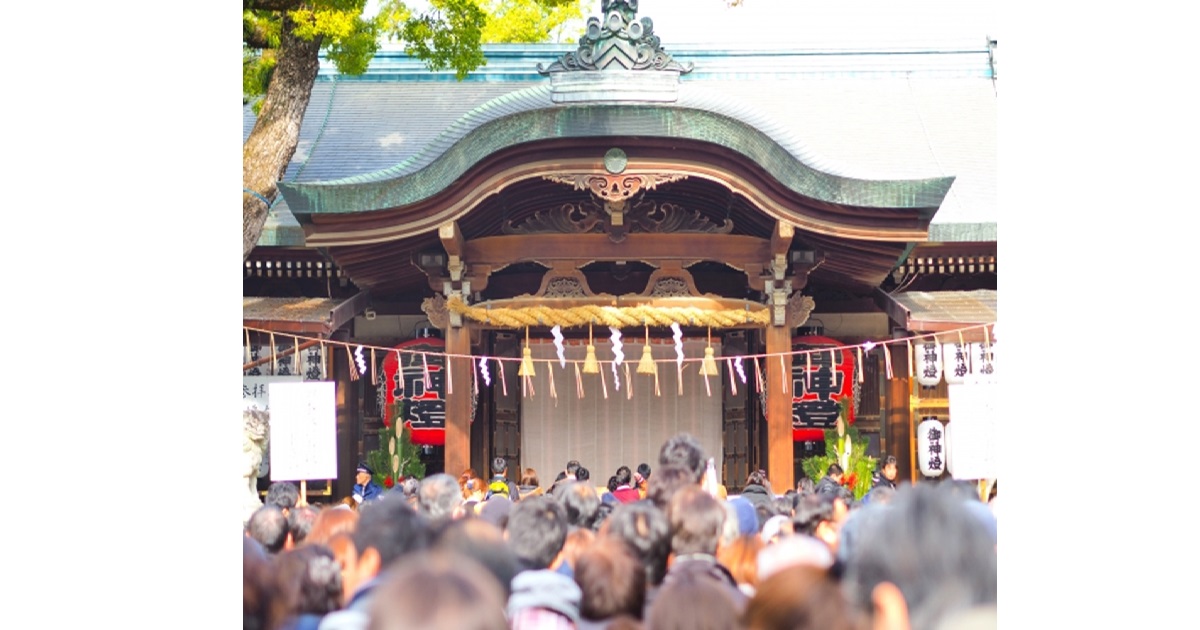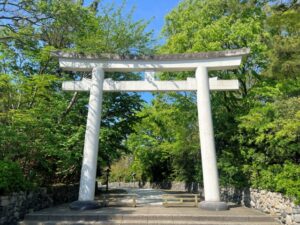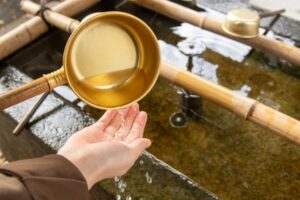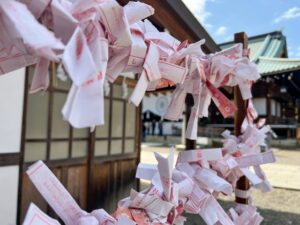Shrines and temples are some of Japan’s most beautiful and serene spots.
While they may look similar, they belong to two different religions: Shintoism (shrines) and Buddhism (temples).
Knowing the basic etiquette not only shows respect but also makes your visit a more meaningful cultural experience.
This guide will show you the proper way to visit both.
Part 1: How to Worship at a Shinto Shrine (Jinja)
Shrines are dedicated to Shinto gods, known as “kami.”
You can identify them by the large “Torii” gate at the entrance.
Step 1: The Torii Gate
The Torii gate marks the entrance to a sacred space.
- Bow once before passing through the gate.
- Avoid walking in the very center of the path, as this is reserved for the kami. Stick to the sides.
Step 2: The Purification Fountain (Chozuya)
Before praying, you must purify your hands and mouth at the “chozuya.”
- Right Hand: Pick up the ladle (hishaku) and scoop up water. Pour it over your left hand.
- Left Hand: Switch the ladle to your clean left hand and pour water over your right hand.
- Mouth: Switch the ladle back to your right hand. Pour a little water into your cupped left hand and rinse your mouth. Do not touch the ladle directly to your mouth. Spit the water out discreetly on the ground.
- Ladle: Tilt the ladle so the remaining water runs down the handle to clean it, then place it back face down.
Step 3: Praying at the Main Hall (Haiden)
This is the “two bows, two claps, one bow” rule.
- Gently toss a coin into the offering box (saibako). 5 yen coins are considered lucky.
- If there is a bell or gong, ring it once to greet the kami.
- Bow deeply twice.
- Clap your hands twice. Keep your hands together for your prayer.
- Bow deeply one final time.
Part 2: How to Worship at a Buddhist Temple (Otera)
Temples are places of Buddhist worship.
You can identify them by the large “Sanmon” gate and the presence of incense burners.
Step 1: The Sanmon Gate
Similar to a shrine, bow once before entering the temple grounds.
If there is a large incense burner (“jokoro”), you can “bathe” in the smoke.
Waft some smoke towards you, as it is believed to have healing properties.
Step 2: Praying at the Main Hall (Hondo)
The process at a temple is quieter and more meditative.
- Gently toss a coin into the offering box.
- Do not clap your hands.
- Quietly put your hands together in front of your chest (this is called “gassho”).
- Offer your prayer, and then bow once.
Omamori (Amulets) and Omikuji (Fortunes)
Both shrines and temples sell good luck charms called “Omamori” for things like health, love, or success.
They also have “Omikuji,” which are paper fortunes.
If you get a bad fortune (Kyo), it’s customary to tie it to a designated spot on the temple/shrine grounds to leave the bad luck behind.
Go Deeper with a Cultural Tour
Now that you know the proper etiquette, why not experience these sacred places with an expert guide?.
A guided tour can offer deeper historical insights and take you to hidden spots you might otherwise miss.
Klook offers a wide variety of cultural tours and activities across Japan, allowing you to connect more deeply with the local culture.
You Might Also Like
Many famous temples and shrines in Kyoto offer a chance to enjoy traditional green tea.
Discover the best spots to relax after your visit.
【Kyoto Matcha Tour】7 Exquisite Spots to Enjoy Japanese Green Tea
If you found this guide helpful, please give it a like!.








